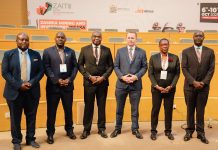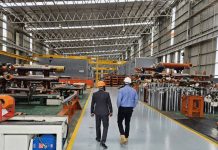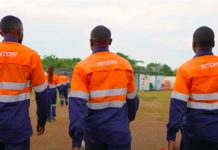With Zambia’s New Dawn Government’s third Budget announcement behind us, Mining For Zambia once again sat down with Michael Phiri, Tax Partner at KPMG Zambia, to ask for the tax expert’s thoughts on the 2024 Budget, what it means for Zambians, and how it follows on from the bold – and, even, “audacious” – measures that the UPND Government has announced since coming to power in August 2021.
***
You described last year’s Budget as “harmonious”. How would you describe the 2024 Budget – whose theme is “Unlocking Economic Potential” – and in what respects is it different to those that preceded it?
If you were to use one word to describe the 2024 Budget, it would be “stability”. This Budget is seeking to stabilise the Government’s tax policy, and it’s also seeking to focus expenditure where it will have the greatest impact.
In the UPND Government’s first two years, they followed a trajectory of first curing what was wrong and putting things right from a legislative perspective, so that businesses can thrive. Bottlenecks in the mining regime and in the agricultural sector were addressed (for example, with duties on machinery being removed), and challenges in the tourism sector and all the key sectors were also addressed.
In this year’s Budget, we’ve seen a little more stability. There are no changes to the property transfer tax legislation, no changes to mining tax legislation, and no drastic changes to the agricultural sector or the tourism sector. Government is letting things run. So, “stability” would be the word.
Your post-Budget analysis is well-known for its categorisation of “winners and losers”. Who are the winners and who are the losers this year?
Many sectors in this particular Budget are winners, to the extent that you struggle more to find the ‘losers’ than the ‘winners’. The agriculture sector continues to be a winner, as you would imagine – with the additional expenditure that the Government is proposing in order to keep the sector kicking – and there are also some expenditure plans to stimulate the tourism sector.
A lot has been done to open up the manufacturing sector, including changes to legislation affecting Zambia’s Multi-Facility Economic Zones (MFEZ) and also some value addition initiatives, both of which are very good. For transport and logistics, [customs] duties have been removed from [the importation of] rolling stock on the railway lines as well, which is very welcome.
The wins trickle down to employees, too: the high-income earners benefit from a reduced tax rate. From a social safety net perspective, the tax-exempt threshold will increase so that those who earn below ZMK 5100 [compared to ZMK 4500 in the 2023 Budget] will not pay any income tax.
There are no changes to the mining tax regime in this Budget, which is positive in the sense that one of the key tenets of a good tax system is predictability for investors. If you have too many frequent changes, then investors cannot plan properly and assess the period of time that’ll be necessary for them to recover the funds they’re investing – and this is especially true of long-term investments in sectors like mining. So, the predictability that we’ve been waiting for is beginning to kick in.
One change that’s being proposed for the mining sector is the funding of aerial geophysical surveys in several Zambian provinces – which geologists have been calling for – in order to increase the pace at which Zambia’s undiscovered minerals can be found. A sum of ZMK 160 million has been proposed in the 2024 Budget. Do you think this is well-allocated?
This is a very welcome development because geophysical mapping is something that should have been done many years ago so that we know what minerals exist in Zambia, and where they are located. The increase in illegal mining that’s recently come to the fore can partly be blamed on the lack of current geophysical maps that show the locations of particular minerals. So far, Government’s approach has been reactive: once gold is identified, security teams are put in place to try and protect those areas. Up-to-date mapping will provide Government with the necessary information to proactively protect areas where there’s a concentration of minerals, so that illegal activities can be prevented. It will also be very helpful for managing the process of developing new mines.

In the Minister of Finance’s Budget speech, he said that to unlock Zambia’s economic potential, the country needs to address the “constraints” facing the economy, especially in mining, energy, manufacturing and agriculture. These include “low private sector investment” and “low access to affordable finance”. Do you feel that there are provisions in the Budget to address these particular “constraints”?
If you look at this Budget overall, you will not see much in the way of specific measures to address “low private sector investment”, but when you look at the totality of the measures implemented in the three Budgets that the Minister of Finance has presented [in 2021, 2022 and 2023], then you see the opportunities. The same goes for the mining sector: there were hardly any changes in this Budget. Are there enough measures to attract investment in mining? Certainly. Investors are interested because of the measures that were passed in the past two years.
When it comes to the high cost of borrowing, I think it’s time for the banking sector in Zambia to respond to the Government’s initiatives by bringing down interest rates, and one hopes that is achieved in the coming year.
Teamwork makes the dream work
If you ask me what this Budget’s key risks are – in other words, what would lead to its failure – it’s not revenue mobilisation and expenditures. It’s the failure of the implementers to follow through on the policies that the Government is putting across.
One thing that you cannot fault this particular Government on is the credibility that they’ve restored to the budgeting process. Right now, we can rest assured that, whatever is budgeted for, will be expended. A lot of us said that the UPND Government’s first Budget was too ambitious – or “audacious”, even. Some of the pronouncements – such as the provision for free education and the number of teachers and healthcare workers who’d be employed – took your breath away. But all those measures have been rolled out and people are receiving a salary consistently and – I dare say – on time! This is what has restored the Budget’s credibility.
And so, one just hopes that the other ministries will pull together. The funds allocated will be made available, so if there’s failure at the implementation level, it’s because the relevant ministries haven’t risen to the occasion. It will take the participation of all the Government ministries to ensure this Budget performs to people’s expectations.
When it comes to mining, the Minister of Finance has said that the current (more attractive) mining tax policy is already yielding benefits, and the increase in investment commitments – from $1.7 billion in 2022 to $3.4 billion in 2023 – is proof of that. But the public has also aired complaints about these “benefits” being slow to materialise. Do you think the Minister’s comment about investment in the mining sector taking time to yield results is fair, or is there something that could be done by Government to encourage further investment and/or accelerate the process?
This comes back to my point about the need for all Government departments to pull together. KCM [Konkola Copper Mine] and Mopani have been “mining in court” – to use the Minister of Mines’ terminology – and the challenges that have plagued these two mines need to be addressed. Is it the Minister of Finance’s responsibility to do that alone? No. It’s the whole government machinery that needs to get involved, and the Ministry of Mines needs to be at the centre of helping to unravel these particular complexities.
So when the question is asked, “Is the Government doing enough?” I would say that, in terms of the mining tax regime, the Ministry of Finance has done its part in resolving the issues, and the Minister of Mines also needs to take an active interest. In some respects, successes have been scored. In other respects, we are lagging behind. But mining decisions are not made at the click of a finger. They are long-term, they have to be thought through. You’ve got to be patient before you can notice the results. If you’re looking for quick-fix results, it’s not in mining.
In your post-Budget interview with Mining For Zambia last year, you said: “Mining is the key contributor to Zambia’s foreign exchange earnings, as well as job creation, so we can expect the industry to continue to be our backbone for a long time.” Are we on the right track?
I’ll tell you what: if we get Mopani producing 200,000 tonnes, and get KCM producing 200,000 tonnes (which they had capacity to achieve in the past), and we also have the North-Western Province mines firing on all cylinders, within a short period of time we can get to 1.5 million tonnes [of copper produced per year]. That’s halfway to Government’s target of 3 million tonnes [of copper produced per year by 2032]. Some of the other 1.5 million tonnes will need to come from greenfield operations, but there is also an interest in reviving some of the older mines on the Copperbelt which are flooded and in need of de-watering. Because technology has evolved, what in some cases appeared to have been low-grade copper ore can now be processed commercially. So there’s really an opportunity for other mining operations to open up in a shorter space of time than it will take to get a greenfield operation going.
Can 3 million tonnes be achieved? Well, we need to see more activity kicking in, and the issues at hand being resolved quicker. And we need Team Zambia to work together a bit more coherently than we’ve seen in the past.
It has to be a team effort: the Minister of Mines, the Minister of Finance, the Minister of Justice, the Minister of Transport and Logistics – and the Minister of Energy as well because, with increased mining activity, energy supply will also need to be ramped up. Everybody has to pull together! Only as a team, can we achieve this goal.
























